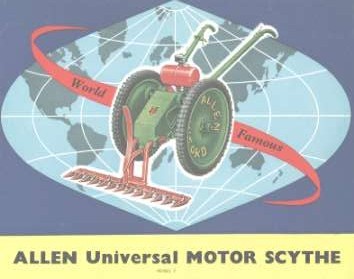posted 11 years ago
I have read a few threads on this forum about the use of tractors and found good food for thought. I am looking at buying 10 acres in the next couple of years. I plan to rent the equipment that I originally need to do any earth moving or very repetitious work that can best and most quickly be done with very expensive equipment. Given the size of land, my age and the things that I want to do, I can see the need to have some kind of utility vehicle to make life not only easier but to save wear on my body. I would like to suggest this idea for your critique:
A steel frame about 6' by 6' (1.7m by 1.7m) - or 4' by 4', etc. and about 2' (60cm) tall mounted on tracks (tank tracks, not wheels). Each track has 2 electric motors. There is an additional electric motor mounted to a pto for accessories or to operate a hydraulic pump if necessary. The top of the frame is covered by steel or wood, and is nothing but a platform, save an area for a driver (the device could even be controlled remotely). Under the top platform is an area to carry batteries and mount tanks to carry water or nutrients for crops - water can be added for nothing more than additional weight. The top platform would also have a small crane/mechanical arm to facilitate loading and unloading. The generic nature of the moving platform would be such that accessories from many other brands of tractors could be used. Top speed would be about 10 mph (16kph) The platform should be capable of carrying at least a thousand pounds - (450 kg) when not pulling a plow, ect in additional to handling the weight of the platform itself. I don't know how to use any CAD software yet, but what I am imagining would look like the attached photo, with the exception that the tracks would be mounted under the vehicle to give it more ground clearance. A very bare bones, utility vehicle that could easily be modified for almost any purpose.
I choose electric motors to reduce the complexity of the vehicle - no transmission needed, no drive train, no dinofuel, etc. Electric motors have very few parts, and with a little bit of training, can be repaired by most people. There also would not be any obnoxious smells. Electric motors also lend themselves more readily to use a remote control. Can you imagine sitting on a lounge under an umbrella, sipping lemon tea while plow or mowing your land? It still would require some additional electronics to make it safe but I am enamored by the idea.
Perhaps and ideal situation - if plow, tillers, seeders, disks, etc could be mounted underneath the platform rather than being dragged behind the vehicle to minimize the area required to make turns.
What are your thoughts? The platform would be useful for any situation - a general permie community or someone who has to grow a large area of one or two crops. The only reason I am looking into the mono crop situation is to grow something that can be processed either into alcohol or biodiesel for fuel for my vehicles. Also, for growing one staple that can be used to feed a variety of animals, supplemented by other things as necessary.
Cost? Just by poking around to some mfg sales rooms in China, I think 4 x 5hp low rpm motors would be about US$1,500. The rest of the expense - metal, welding, track and suspension, I have not looked into yet.
tractor.jpg
![Filename: tractor.jpg
Description: [Thumbnail for tractor.jpg]](/t/33899/a/15399/thumb-tractor.jpg)



















 1
1












 I wish I could find an electric motor guru now.
I wish I could find an electric motor guru now.
















